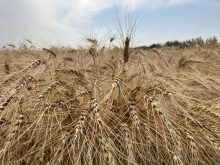It’s not happy news, but here is the market forecast delivered to FarmTech attendees by Jonathon Driedger, senior analyst with FarmLink Marketing Solutions.
Canola
The rise in American soybean prices has pushed up canola in recent years, but it’s now becoming an anchor as U.S. farmers are expected to plant more soybeans and less corn and wheat this spring, he said.
As well, exports and crush numbers are not growing as fast as expected, so estimates of the carry-out from last year’s bumper harvest are being revised upwards.
Read Also

Lakeland College studying livestock wellness through cannulated heifers
Lakeland College’s Applied Research Team is working with six cannulated heifers on a handful of research projects.
Basis levels for canola have gotten worse in recent years — which is the market’s way of saying there’s an oversupply. Consider longer canola rotations, said Driedger.
Peas
China has been driving the export market for peas and making up for lagging demand from India.
But be cautious, Driedger said.
Demand is relatively flat right now, and there’s a strong possibility it could stay this way. He expects a build in the pea carryout, but said it is hard to predict. Keeping a constant watch for marketing opportunities will pay off for those with peas to sell, he said.
Barley
Canada’s share of the global barley market has been declining for years.
“The story of barley is similar to oats and wheat. We’re just going to end up having too much of this stuff around,” he said.
Feed barley prices will only improve if there is a run on corn or dried distillers grains, he said, but the price outlook for corn is flat to somewhat bearish.
“Feed grains are something where it is easy to substitute for something else. There are a lot of substitutes around and abundant substitutes. There aren’t a lot of reasons why feed barley should go much higher.”
More from the Alberta Farmer Express website: As storm clouds gather, farmers urged to batten down the hatches
Wheat
Oversupply may be too modest a term when it comes to wheat.
“Of all the ones that are kind of ugly, wheat takes the cake here. We’re having record exports of wheat this year, but we just have so much of it and we just won’t move it all. That’s the challenge.”
In four of the past five years, the carry-over was about 4.5 million tonnes, but it’s expected to be double that by the end of this crop year. That mountain of wheat won’t disappear in a hurry.
“There will be a drop in acres next year and even if we return to average yields instead of the jaw-dropping yields we had this year, we’re still going to end up with an enormous amount of wheat,” Driedger said.
Further increases in exports will help, but not solve the problem.
“We might be able to export more in the next crop year, but we’re really just chipping away at the pile.”















